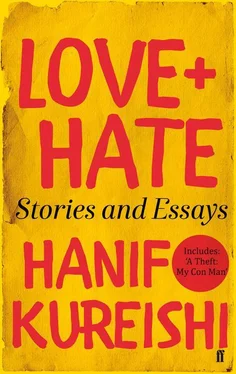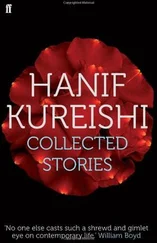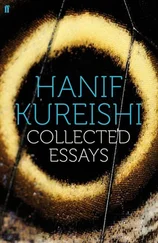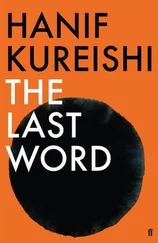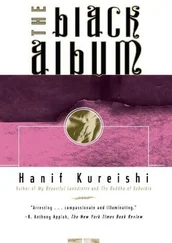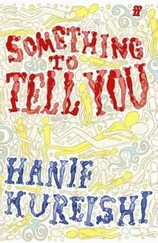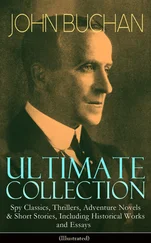I have come to adore my pens and can often be found fondling them, particularly my old classic Mont Blanc. But I have fallen for a new black Montegrappa, with its shiny case, heaviness and bendy nib. A favourite occupation of mine is to study the Montegrappa catalogue, turning the glossy pages slowly, convincing myself I need the turquoise one, and cannot survive another minute without the limited edition St Moritz. Not that expensive pens are always better than cheap ones. I use Lamy fountain pens every day, as well as their roller balls, in a variety of colours. Muji is excellent for light gel pens. But sometimes only a soft pencil will do … And still, a lot depends on the kind of paper you use and which nib runs best on what surface …
A writer could come to love the eventful paraphernalia of writing equipment and inks, of which colour where, as guitarists love guitars, photographers their cameras, and fetishists their thing. I like to see the page I’m on decorated. I want my art or craft — writing — to resemble a physical activity like drawing. This is not only passing time until one has to actually commit to the agony of beginning. In terms of sentences and paragraphs, I like the page to be prettily laid out; it is part of the pleasure of what I do, just as I like to look at art while I’m writing, rather than reading other people’s words.
This pleasure, of course, is only a minor hedonism, for how could I forget that I grew up in the 1960s, when pleasure was still hidden, subversive and irreligious, when sucking on a cigarette could seem decadent? Recently, in my spare time, I’ve taken to lying on my sofa thinking of hedonists I admire — or admired. I think, in particular, of a good friend who died recently, a former roadie, private detective and storyteller — a man who could make the world seem worth getting up for — who explained last year to my youngest son and me, as we sat in Rio’s Sugarloaf cafe, that he once fucked six women in a day. How hip it was in the 1960s, and particularly in the seventies, not to take care of yourself or anyone else, stepping as close as you could to peril and death, where things got raw and seemed to matter more than anything else: how important it was to be a threat to oneself, if not to others. The Velvet Underground, with their black polo-necks and near-death look, were an impressive influence. With dyed blond hair, Charlie Hero, in the television version of The Buddha of Suburbia , stalks the school playground with authority because he has the Velvet Underground and Nico album under his arm …
But as for committed hedonism, there’s always the danger of there being too much of it. If, in certain circumstances, drugs can be bad for you, work can be worse. The ever-reliable Nietzsche, when it comes to truth, denotes work ‘the best policeman’ and pits work — mind-numbing labour — against more important matters like ‘brooding, dreaming, worrying, loving, hating’, suggesting that pure labour organises us too easily and excludes too much. We use work as a discipline to kill off our most interesting and passionate impulses.
If the most significant post-war literary text, Waiting for Godot, was about the unbearable heaviness of deferment, about how mad you can go when nothing important is happening, we grew up — in the mode of capitalism then fashionable — in a period of instant gratification. Waiting, and frustration, were no longer allowed. We wanted it all now, and we wanted it at once.
So beware: if there’s only pleasure, it will call up destructiveness and death. Sacrifice is always a temptation. The pleasure-seekers explode, go crazy, or otherwise ruin themselves, as if that were the most perverse privilege of all. The natural end to pleasure would be addiction, a fatal narrowing, where one would find, at last, a boundary or a limit.
The important question has to be: how can we defend ourselves against our own destructiveness, those tantrums of the self-damned? How can we even see that we are being destructive? Where might we find better pictures of good lives?
The making of art represents the crossroads where the good things collide, where duty, magic and creativity fruitfully run into one another. Being an artist is a way of being interested in other people without having to sleep with them. There’s an apt sentence by the British analyst Ella Sharpe: ‘Sublimation is in its very externalisation an acknowledgement of powers within us to both love and hate.’
Not everything can be sublimated; one thing cannot be turned into another indefinitely. Nor can the excluded element be forgotten or renounced; it must find danger and an object or you will fall ill of unfulfilment, becoming unbearable to yourself. The hedonist, joy-rider and addict are safe from this; nothing new will happen since they have cancelled the future. They have ensured that the bad thing has already happened.
Making a swift survey, I see that friends who have endured with most contentment, if not happiness, are the artists or craftsmen, the ones who continue to work however futile it might feel. They go on: the work might be eccentric, far-out or delinquent, but the artist has to form and control her somersaults of the imagination to make something for others, enduring the frustration of turning day-dreaming into meaning. All work is productive, a greeting, a wave across an abyss, as the audience overhears what the artist is going through.
The artist must live on the edge of failure. There can be no omniscience; any work could be a triumph, disaster or a bit of both. The difficulty here must be proportionate, and the work not impossible. The pen is a more than useful instrument; it is a wand which conjures that which you don’t yet know into being.
The other day it occurred to me that I needed more exercise and should take up skipping. I obtained a smart leather rope with weights in the handles, and, waiting until it was almost dark, went out into the street. Making sure that no one was coming, I started bouncing on the pavement. I must have skipped a bit as a child, I guess, because I could remember how to do it. Being a determined if not bloody-minded fellow, I improved after a few days; I could go on longer. But that was that: I didn’t do more skips; my knees couldn’t take it, and I soon ran out of breath. Nor could I do the leaps, twirls, step-overs and girly hops I’d seen on the internet. I repeated the same little leaden jumps over and over. Soon I had to conclude that I’d reached my level. The only way was down.
My thirteen-year-old son wandered out into the street and said he’d like to have a go with the rope, if I didn’t mind. I handed it over and he began to fling himself in all directions at once, criss-crossing his arms, hopping and tripping from foot to foot while doing a Cossack impression; then he did the whole thing backwards, singing a Beatles song. It was moving and educational to be so instructed by one’s son. I hoped an opportunity for retribution would soon present itself.
His easy display in comparison to my inefficiency stimulated in me childhood memories of being humiliated by my father at home in the London suburbs. In India Dad had, apparently, been brilliant at cricket, squash and boxing. As a young man I could never reach his level; nor did we have the facilities or sunshine to help provide the opportunity. Or perhaps Dad made sure I could not keep up with him. Whichever it was, my father, tragically, mostly wanted to be a writer and, it turned out, he wasn’t great at that. He didn’t give up, but he was never as good as he wanted to be, and his writing efforts yielded him little satisfaction or self-esteem, particularly as I began to succeed.
My son who can skip and sing found it difficult, for a long time, to read and write at the level of others his age. At primary school he was castigated, even insulted and punished for his inability. After experts were called in, he was investigated and berated some more, and finally labelled dyslexic and dyspraxic.
Читать дальше
